Psych Times
- Relationships
- Mental Health

Fun Critical Thinking Activities for Nursing Students

Medical courses are popular for their complexity and demanding nature. For your everyday student fighting to pay tuition, rent, food, and loans, pursuing a career in the field can be a nightmare. Those who’ve made the journey understand the importance of critical thinking for nursing students. Every facet of the course requires thorough analysis and logical engagement. Nonetheless, educators can intervene to make the journey fun and memorable by introducing exciting activities into the classroom. Below are 10 projects to consider in your classroom.
The Importance of Critical Thinking for Nursing Students
There’s no denying that critical thinking is of utmost importance for nursing students. Well, no professional field would survive without analytical skills. But nursing is about people’s well-being, which makes the practice even more sacred. Below are a few reasons why critical thinking is essential to the practice:
Patient safety
The primary role of a RN is to care for their patients. But this isn’t always the case. Some nurses, e.g., Charles Cullen, have committed atrocities against their patients. Many others have harmed their patients unintentionally or due to negligence. In the medical field, the consequences of a wrong decision can be severe. As such, we need our nurses to be on top of their game. They must possess necessary critical thinking skills to identify potential risks and avert or remedy them.
Clinical judgment
Unlike popular opinion, the role of nurses isn’t limited to administering drugs and caring for them. There are many scenarios that demand clinical judgments, e.g., evaluating symptoms and making a diagnosis, deciding on appropriate medication dosage, recognizing signs of an allergic reaction, etc. These are delicate and life-defining matters that demand critical thinking skills.
Ethical decision-making
Nothing is as demanding as making an ethical decision. The dilemma involved can make or break even the best nurses. In training, they’re often advised to make the decisions they can live with, and in the best interest of their patients. We hope you can see the catch. Whatever the situation, such cases require weighing different ethical principles, values, and perspectives, making them almost impossible to deal with. Handling critical thinking questions during training can make it a bit easier.
Completing course assignments
All medical courses have a heavy workload of assignments, practicals, and clinical placements. If you add personal life requirements, it becomes almost impossible to handle. In some courses, students handle voluminous works that require days and weeks of reading. The vastness aside, you must be smart to understand the terminology and concepts in nursing. This is where most students fail. However, there’s no cause for alarm. You can always seek help when stranded with your essays and dissertations. There are reputable companies that specialize in nursing writing and proofreading services that can come through on short notice. WriteMyPaperHub , for instance, has very creative and highly trained PhD writers in nursing and medicine who can deliver complex papers within the deadline you need.
Stimulating the Mind: 10 Fun Critical Thinking Activities for Nursing Students
There are several fun critical thinking activities for nursing students to consider. However, many can be costly, time-consuming, or too demanding. For an ordinary classroom, group activities should be simple and interesting. Here, we’ve assembled 10 activities and critical thinking games for nursing students.
1. Case studies
Nursing is a very practical course. As such, any opportunity to explore real-life patient scenarios is highly welcome. This exercise provides just that. Students can organize themselves into small groups and tackle a problem, for example, examine a wound, identify its probable causes, and propose how to treat it.
There’s no better way of sharpening your critical thinking skills than through open discourses. Let your students disagree to agree, for they will gain so much more from being corrected by their peers than rote memorization. Therefore, occasionally pick a controversial or ethical topic and let them debate on it. Just ensure that the engagement is structured for maximum impact.
3. Reflection journals
Journals can be a student’s best companion. Medical courses can be demanding, putting undue pressure on college students. However, with proper planning and focus, dedicated persons are likely to make it through. A diary can help you organize yourself, appreciate the difficulties you’ve overcome, reflect on your clinical experiences, and motivate you to keep pushing. But keeping it isn’t enough. You must read and reflect on your journey if you’re to stay on track.
4. Simulation exercises
Advances in technology have significantly impacted medical training. For instance, Virtual Reality (VR) is helping instructors to deliver realistic scenarios to their learners remotely. Imagine creating and sharing realistic images of viruses, pathogens, or sick people with your learners and asking them to explore them under pressure and deliver a verdict. It’s like being in the lab!
5. Critical thinking worksheets
Also commonly referred to as critical thinking flow sheets, this activity can be instrumental in testing students’ abilities. It’s a step-by-step process involving clinical scenarios that require extensive research. Here, learners are supposed to gather data on a specific issue, analyze it carefully, and arrive at a diagnosis. It’s a thorough process that employs logic and problem-solving skills.
6. Role-playing
Nursing schools don’t train nurses to be just subordinates. Their curriculum entails everything about patient care and simple diagnosis. In fact, in remote areas with no clinicians, they’re the doctors of the day. Their instructors can organize scenarios that expose them to such situations and let them act as the physicians in charge. They can also act as other people in the healthcare team, e.g., clerks, therapists, and pharmacists. Organizing such critical thinking activities can enhance their preparation and training.
7. Flipped classroom
Even though nursing is quite hands-on, its trainers can deliver their courses and instructions remotely. A flipped classroom is a dynamic approach to learning that allows students to explore their materials at home. Technological advances have made it possible for remote collaboration, making this one of the most enjoyable and fun activities.
8. Group discussions
Unlike debates that pit groups and individuals against each other, group discussions are less confrontational, making them ideal for younger learners. These setups are also suitable for discussing ethical dilemmas. While it’s often hard to find common ground for such issues, challenging assumptions are critical for nursing practice.
9. Decision-making games
The life of a nurse involves making numerous critical decisions. Some of these big resolutions require an instant response. This requires rigorous training. Trainers can use board games, for instance, to pressure students into making healthcare-related decisions fast. This can help them in making informed choices under pressure.
10. Mind mapping
You can introduce this activity as a visual instrument for arranging, generating, and investigating ideas and the links between different nursing concepts.
Critical Thinking for Critical Patient Support!
Nurses are the pillars that hold the healthcare system together. However, their services are only as good as their training and abilities. If we want the best out of our nurses, we must sharpen their critical thinking skills and make them ready for service. In this short article, we’ve explored a few activities that can help nursing trainees develop critical thinking skills essential for their future roles as healthcare professionals.
You may also like
November 1, 2024
Understanding Cleft Penis: Causes, Symptoms, and Treatment Options
Medical billing services: streamlining revenue cycle management for healthcare providers.
October 31, 2024
What is Sleep Apnea & How Can it be Treated?
October 30, 2024
How to Better Accommodate Hidden and Invisible Disabilities
How nmn took the biohacking world by storm after its joe rogan podcast debut, 5 great reasons to have clear bus signage on commercial vehicles, exostoses (surfer’s ear): symptoms, causes, diagnosis and treatment method.
October 29, 2024
The Importance of Meditation for Sound Mental Health
The vital role of mental health nurses in patient care, top reasons to invest in a home at nava grove.
September 15, 2024
Exploring Activities and Amenities in Single Senior Retirement Communities
The ultimate guide to senior living: everything you need to know.

9 Fun and Educational Nursing Games
Nursing is an extremely challenging and stressful job. You’ll need to spend most of your day caring for patients and making sure that they get their medications and treatment on time. You’ll also need to assess them routinely to make sure nothing bad happens to them while they are under your care.
If you fail to unwind once in a while, you can end up with burnout that can easily make you want to leave the profession. Now, before that happens, try out a few nursing games .
Below is a really handy list of games that aren’t just educational but fun, too.

Fun and Educational Nursing Games
1. prognosis: your diagnosis.
If you’re always getting a busy shift but still want to brush up your critical thinking skills while on the go, then Prognosis: Your Diagnosis shouldn’t be out of your list of nursing games. This app can help you assess your knowledge about diseases, test your clinical knowledge, and apply what you know in a risk-free environment.
The game presents engaging scenarios that will really test you out as a nurse. Available on iOS devices, this game is designed for busy people like you.
2. Study Shack
Study Shack features more than 1,000 words and terms that nurses should know. Choose from crosswords, unscramble, and more.
Learning new words can be painful and hard. But this educational game will take both away because it is fun to play and goes from simple nursing words and terms to harder ones.
3. RNtertainment
- Traditional game board format gives you the flexibility to create a competitive group atmosphere with fellow students/ colleagues, or to review on your own.
- Clinical questions and scenarios covering all the major nursing categories provide an engaging review alternative to fully prepare you for the NCLEX® exam.
- Hundreds of challenging questions and rationales from student-favorite NCLEX® exam expert Linda Silvestri reflect content on the latest NCLEX® test-plan.
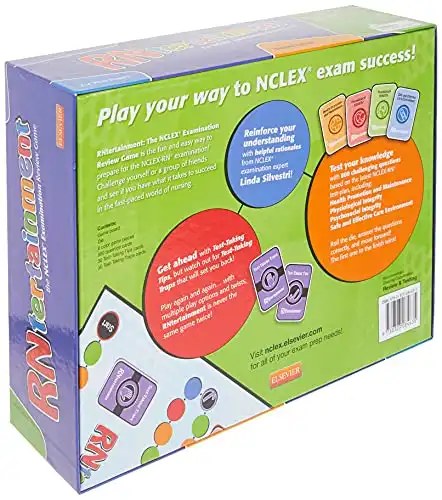
RNtertainment has a lot of topics that will really challenge you. Its topics include Safe and Effective Care Management, Health Promotion, and so much more.
It comes in a traditional game format which can give you the opportunity to create a competitive atmosphere for you and your colleagues. It has over 800 questions that aren’t only educational but engaging, too.
The questions vary in format. You can encounter multiple-choice, fill-in-the-blanks, and prioritizing types of questions. These are all great if you’re preparing for an exam, like the NCLEX. You can also find rationales in a separate book so you’ll be properly guided in playing the game.
4. Infection
Infection is all about diseases and medicine. Two to eight players can start the game with 5 disease cards and $500. Those disease cards contain causes, treatments, and symptoms of about 80 medical conditions.
You can pass them to your neighbors, leave them in public places, or get them treated by a Voodoo doctor. The first one to be disease-free and healthy wins the game.
5. Medical Monopoly
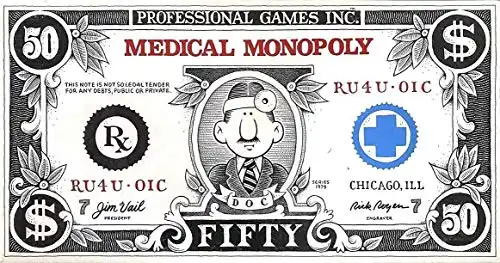
If you aren’t into apps and mobile games, then try Medical Monopoly . This board game is best played with your co-nurses during your day off or whenever you need to take a break and relax.
The game resembles the way modern healthcare works in that you need to compete with other hospitals to get the most number of patients. With $500 to start with, you’ll need to buy organs and perform transplant operations. You’ll need to properly diagnose patients, too.
6. Role-Playing
Role-playing is one of the best nursing games you should try if you are teaching nursing students. It’s interactive and encourages students to be more active and involved.
For example, you can group students into groups of two or three. Ask each student to assume a role. It can be a difficult patient, doctor, or relative. Instruct them to act out a common scenario in the hospital that can challenge a nurse’s skill or patience.
7. Quarantine
- Ages 13 and up
- For 2 to 4 players
- Playable in about 60 minutes
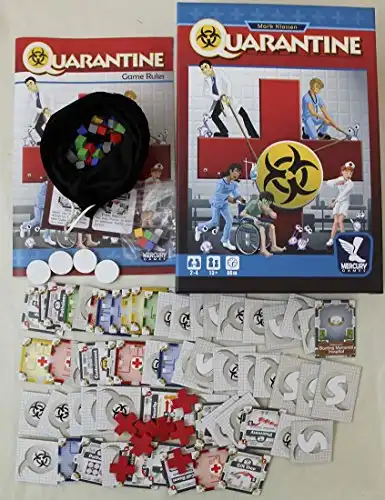
Quarantine is another board game where you need to build the biggest and most effective hospital while making sure patients and doctors are well attended to. It’s a form of a tile-laying game where you need to acquire the most number of tiles by beating other players.
Take note that there are highly contagious patients that can spread infections and shut down your hospital.
8. Pixel Hospital
Time management is critical skill nurses have to master if they want to be successful in their chosen profession. This is exactly where Pixel Hospital can help you.
The game puts you in charge of a busy ER attending to the victims of a pandemic that has hit the city. Being in charge, you need to utilize all the resources, staff, and equipment to make sure every patient gets attended to.
9. Trust Walk
Technically, this game won’t test out a nurse’s knowledge or skills. Instead, it can teach you about trusting your co-workers.
Surviving a busy shift when you’re alone won’t be easy. You’ll need help from your colleagues to ensure that you get all your tasks done and that all patients are safe and properly treated.
For Trust Walk, you’ll need a large room, chairs, traffic cones, and small blocks. Create groups of two. One player needs to go through the course blindfolded as his partner guides him with verbal cues.
Bonus: Nurse Bingo
A hectic shift can really do a number on morale. You can liven up your shift with a fun game of bingo. Download your free nurse bingo card here .
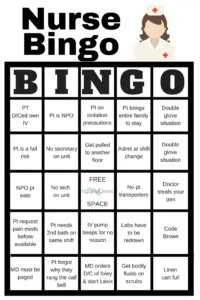
Download Nurse Bingo
- 11 Super Awesome Apps for Nurses
- A Guide to the Most Useful Free Nursing Apps
- 10 Useful Apps for Medical Students
Download Nurse Bingo Today!
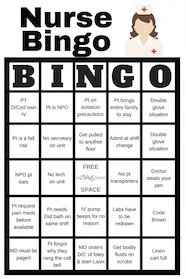
Liven up any shift with a fun game of bingo. See who can fill a row first! Fill a whole card and lose grip with reality.
Your privacy is protected. We will never spam you.
About The Author
Brittney wilson, bsn, rn, related posts.

How to Make a Glove Christmas Tree
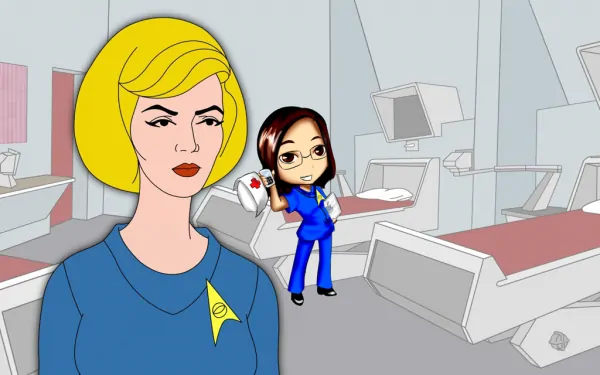

Clinical Informatics Specialist: New Job and Tips To Become a Nerdy Nurse

15 Fun Nurse Christmas Ornaments

Standing Strong: Why Patient and Nurse Advocacy Matters
Leave a comment cancel reply.
Your email address will not be published. Required fields are marked *
Save my name, email, and website in this browser for the next time I comment.
This site uses Akismet to reduce spam. Learn how your comment data is processed .
Start typing and press enter to search

Effective clinical learning for nursing students
Approaches that meet student and nurse needs..
- Direct care nurses serve as significant teachers and role models for nursing students in the clinical setting.
- Building critical thinking skills is one of the most important outcomes in the clinical setting for nursing students.
- Collaboration with nursing faculty during the clinical rotation can ease the burden on direct care nurses and facilitate a positive learning experience for the student.
The nursing profession continues to experience several challenges—some longstanding and exacerbated by the COVID-19 pandemic. The shortage of nurses at the bedside and reports of nurses planning to leave the profession soon place stress on the workforce and the healthcare system. The situation has put even more pressure on nursing schools to recruit and retain students who enter the workforce well-prepared for practice and capable of filling these vacancies. However, concerns exist surrounding students’ critical thinking skills and their readiness for a demanding career.
The challenge
A longstanding shortage of nursing school faculty and a reliance on new graduate nurses to serve as preceptors create challenges to properly preparing nursing students for a demanding role that requires excellent critical thinking skills.
What-Why-How? Improving Clinical Judgement
New nurses and clinical judgment
Nurse faculty shortage
Lack of interest and incentives lead to difficulty recruiting nurses from the bedside or practice to education. Many 4-year schools require a terminal degree to teach full-time in their undergraduate programs, but only 1% of nurses hold a PhD. In addition, according to the National Advisory Council on Nurse Education and Practice (NACNEP), the average doctorally prepared nurse faculty member is in their 50s, which means they may soon retire. The surge in doctor of nursing practice programs has helped to bridge this gap, but attracting advanced practice nurses to academia from their more lucrative practice roles continues to prove difficult.
Concerns about the practice readiness of new graduate nurses have existed for several years. Missed clinical experiences and virtual learning during the COVID-19 pandemic heightened those concerns. The National Council of State Boards of Nursing (NCSBN) addressed the calls from nurse employers to make progress in this area by revamping the NCLEX-RN and NCLEX-PN exams to create Next Generation NCLEX (NGN), which includes more clinical judgment and critical thinking items. Nurse educators are working hard to prepare students for both practice and the new exam items by incorporating more active learning into classroom, clinical, and lab activities and emphasizing the importance of clinical judgment skills.
In most areas of the country, clinical student experiences have returned to pre-pandemic arrangements. State boards of nursing mandate maximum faculty-to-student ratios for clinical experiences. Schools can choose to have faculty supervise fewer students than the maximum, but faculty and clinical site shortages may eliminate that option. In many cases, preceptor-style experiences (such as capstone or practicum courses) have higher faculty-to-student ratios, and preceptors may have to meet specific criteria, such as a certain amount of experience.
Nursing faculty who facilitate on-site learning and supervise and teach students during their clinical experiences face several challenges. Some faculty supervise students across multiple units because unit size can’t accommodate 8 to 10 students at one time. Faculty may or may not have access to the organization’s electronic health records or other healthcare information technology, such as medication dispensing cabinets or glucometers.
In such instances, direct care nurses play an important role in the student’s experience at the clinical site. Their familiarity with the unit, the patient population, and the organization’s technology facilitates learning.
Direct care nurses
Allowing nursing students into the hospital can improve the patient care experience and potentially recruit students to work at the organization in the future. However, precepting a student or new employee creates an extra burden on an already overextended bedside nurse. NACNEP identifies several challenges for obtaining qualified preceptors, including lack of incentives and limited preparation in clinical teaching and learning strategies. Many hospitals have nursing students on the same unit several days a week to accommodate multiple area schools. This means that staff nurses are expected to teach students on most of their workdays during a typical school semester.
Unit nurse experience creates another barrier to effective precepting of nursing students. A study by Thayer and colleagues reported that the median length of experience for inpatient nurses working a 12-hour shift was less than 3 years at an organization. Without a better alternative, new graduate nurses frequently teach nursing students, although they may still be in what Benner describes as the advanced beginner stage of their career (still learning how to organize care, prioritize, and make clinical judgments). It’s difficult for someone who’s still learning and experiencing situations for the first time to teach complex concepts.
A guide to effective clinical site teaching
The following strategies promote critical thinking in students and collaboration with nurse faculty to ease direct care nurses’ teaching workload. Not every strategy is appropriate for all student clinical experiences. Consider them as multiple potential approaches to help facilitate meaningful learning opportunities.
Set the tone
Nursing students frequently feel anxious about clinical experiences, especially if they’ve been told or perceive that they’re a burden or unwanted on the unit. When meeting the student for the first time, welcome them and communicate willingness to have them on the unit.
If you feel that you can’t take on a student for the day, speak to the nurse faculty member and charge nurse to explore other arrangements. Nurse faculty recognize that work or personal concerns may require you to decline precepting a student. Faculty members want to find the best situation for everyone. If the charge nurse or supervisor determines that the student still needs to work with you, talk to the nurse faculty about how they can help ease the burden and facilitate the student’s learning experience for the day.
Begin your time with the student by asking about their experience level and any objectives for the day. Understanding what the student can or can’t do will help you make the most out of the clinical experience. You’ll want to know the content they’re learning in class and connect them with a patient who brings those concepts to life. A student may have assignments to complete, but their focus should be on patient care. Help the student identify the busiest parts of the day and the best time to review the electronic health record and complete assignments.
If a situation requires your full attention and limits training opportunities, briefly explain to the student what will happen. If you have time, provide the student with tasks or specific objectives to note during the observation. Involve the nursing faculty member to help facilitate the learning experience and make it meaningful.
Be a professional role model
Students like to hear about the benefits and rewards of being a nurse, and about each nurse’s unique path. Students also enjoy learning about the “real world” from nurses, but keep in mind that they’re impressionable. Speaking negatively about the unit, patients, organization, or profession may discourage the student. If you must deviate from standard care, such as performing a skill differently than it’s traditionally taught in school, provide the rationale or hospital policy behind the decision.
Feel free to discuss the student’s nursing school experience but don’t diminish the value of their education or assigned work. Keep in mind that school assignments, such as nursing care plans or concept maps, aren’t taught for job training but to deliberately and systematically promote critical thinking. These assignments allow a student to reflect on how a patient’s pathophysiology and nursing assessment and interventions relate to one another.
Reinforce how concepts students learn in school provide valuable knowledge in various settings. For example, if the student is on a medical-surgical unit but says that they want to work in obstetrics, engage the student by pointing out links between the two areas, such as managing diabetes and coagulation disorders. Provide encouragement and excitement about the student’s interest in joining the profession at a time of great need.
Build assessment skills
Explain to students your approach to performing assessments and organizing patient care. Most students learn comprehensive head-to-toe assessments but, in the clinical setting, need to focus on the most relevant assessments. To promote critical thinking, ask the student what data they should focus on gathering based on the patient’s condition. Many students focus on the psychomotor aspect of assessment (performing the assessment correctly); ask them about the subjective data they should gather.
Allow the student to perform an assessment and then compare findings. For example, a student may know that a patient’s lung sounds are abnormal but not remember what the sound is called or what it means. Provide them with the correct terminology to help connect the dots. Discuss with the student when reassessments are warranted. If appropriate, allow a student to reassess the patient (vital signs, output, pain, other physical findings) and then confirm their findings and discuss what any changes mean for the clinical situation. If you don’t have time for these types of discussions following a student’s patient assessment, ask nursing faculty to observe and discuss findings with the student.
Discuss care management
Take advantage of opportunities to discuss concepts such as prioritization, advocacy , delegation, collaboration, discharge planning, and other ways in which the nurse acts as a care manager. Pointing out what’s appropriate to delegate to unlicensed assistive personnel or a licensed practical nurse will prove valuable and help reinforce concepts frequently covered on the NGN exam.
Promote critical thinking
The NCBSN has introduced the Clinical Judgment Measurement Model (CJMM) as a framework for evaluating the NGN exam, which incorporates unfolding case studies that systematically address six steps: recognize cues, analyze cues, generate hypotheses, generate solutions, take action, and evaluate outcomes. Each candidate encounters three case studies, with six questions, one for each step of the CJMM. Nursing faculty incorporate this framework and language into the nursing curriculum to help students think systematically and critically and prepare them for the exam.
Nurses with practice experience use this type of framework to gather information, make judgments, and take action. As a nurse approaches Benner’s competent stage of nursing practice, this type of thinking becomes intuitive, and nurses may not even be aware of the conclusions they draw and decisions they make based on their clinical judgment skills. To help students understand why something is happening, they should continue to work through a process like this deliberately. For example, many students view medication administration as a simple task and may say in post-conference discussion, “All I did was give meds.” You perform many assessments and make various judgments while administering medications, but you may not think to discuss them with students. Asking questions of students while they’re performing what may seem like repetitive tasks can help prompt critical thinking. (See Critical questions .)
Critical questions
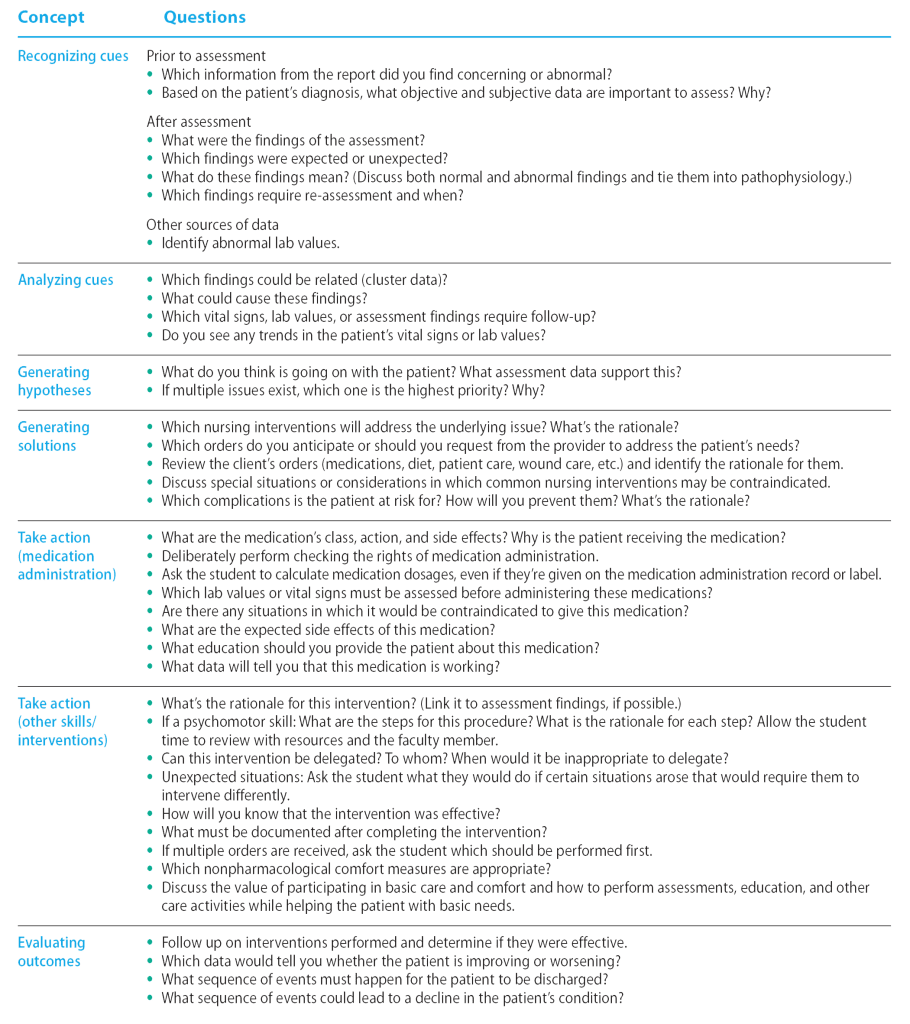
Enhance self-efficacy
Many nurses believe that the student must follow them to every patient. This can be overwhelming for the direct care nurse and a barrier to agreeing to work with students. Other approaches can better facilitate learning. Most students will complete an assignment focused on one or two patients. Encourage the student to spend time alone with those patients to perform a more comprehensive history and assessment, help patients with basic care, and provide education. Select a patient who might enjoy the extra attention to ensure a mutually beneficial experience.
Also, consider asking the student to find information using available resources. Such inquiry can benefit you and the student. For example, prompt a student to answer one or more critical thinking questions using their textbooks or resources available on the hospital’s intranet. If time prevents you from explaining complex topics or helping the student problem-solve, ask the student to take the information they find to their faculty member to review. Nurse faculty won’t be familiar with the specific details of all patients on the unit, so identify the most appropriate questions for the student to consider to help the nurse faculty facilitate learning.
Allowing the student time to find answers themselves builds self-efficacy and confidence and also relieves some of the stress and anxiety associated with being asked questions on the spot. This strategy also models the professional approach of using evidence-based resources to find information as needed in the clinical setting.
To ensure a positive learning experience and reduce anxiety, provide the student with ample time to prepare for performance-based skills. For example, identify an approximate time that medications will be administered to one patient and ask the student to independently look up the medication information by that time. This is more beneficial for the student than observing every patient’s medication administration or participating only in psychomotor tasks, such as scanning and giving injections. This also can free up your time by setting the expectation that the student will have the chance to prepare for and be directly involved in one medication pass.
Similarly, if an opportunity exists for practicing a psychomotor skill, such as inserting a urinary catheter or suctioning a tracheostomy, ask the student to review the procedure with their instructor using hospital policy and resources. If time doesn’t allow for a review, have the student observe to ensure provision of the best care and efficient use of time and resources.
Opportunities in education
Nurses who enjoy working with students or new staff members may want to consider academic roles. Many advanced nursing degrees, available in various formats, focus on education. For those who want to try teaching or have an interest in teaching only in the clinical setting, opportunities exist to work as adjunct faculty or to participate in hospital-based professional development activities. Adjunct faculty (part-time instructors) teach a variety of assignments and workloads, including in clinical, lab, or classroom settings. Many clinical adjunct faculty are nurses who also work in the organization with patients and may teach one group of students one day a week. Clinical and lab assignments vary from 4- or 6-hour experiences to 12-hour shifts.
According to NACNEP, most nursing programs require that adjunct faculty and clinical preceptors have the same or higher level of educational preparation as the program; for example, a nurse with a bachelor of science in nursing (BSN) may be able to teach clinicals for associate degree in nursing or BSN programs, depending on the state’s requirements and the school’s needs. Educational requirements to work in nursing programs vary by school. In some cases, adjunct faculty who don’t have a master’s degree may be supervised by full-time faculty with advanced degrees.
Benefits for adjunct faculty can include extra income, professional development, personal reward, tuition discounts or remissions, and giving back to the profession. Locate opportunities on nursing school websites or by talking to the nursing instructors or administrators in the local area.
Everyone benefits
Applying teaching approaches that benefit students and nurses can help ensure a positive clinical learning experience for everyone. When you graciously accept and teach students you help create positive encounters that enhance student critical thinking skill development, aid program retention, and support organizational recruitment.
Jennifer Miller is an assistant professor of nursing at the University of Louisville School of Nursing in Louisville, Kentucky .
American Nurse Journal. 2024; 19(4). Doi: 10.51256/ANJ042432
American Association of Colleges of Nursing. Nursing faculty shortage fact sheet. October 2022. aacnnursing.org/news-information/fact-sheets/nursing-faculty-shortage
Benner P. From Novice to Expert: Excellence and Power in Clinical Nursing Practice . Menlo Park, CA: Addison-Wesley; 1984.
National Advisory Council on Nurse Education and Practice. Preparing nurse faculty, and addressing the shortage of nurse faculty and clinical preceptors. January 2021. hrsa.gov/sites/default/files/hrsa/advisory-committees/nursing/reports/nacnep-17report-2021.pdf
National Council of State Boards of Nursing. Clinical Judgment Measurement Model. 2023. nclex.com/clinical-judgment-measurement-model.page
Thayer J, Zillmer J, Sandberg N, Miller AR, Nagel P, MacGibbon A. ‘The new nurse ’ is the new normal. June 2, 2022. Epic Research. epicresearch.org/articles/the-new-nurse-is-the-new-normal
Key words: nursing students, nursing education, critical thinking, precepting
Let Us Know What You Think
1 comment . leave new.
All nursing programs need to put in more clinical time. Students do not get the time in clinicals so they do not have the opportunities to develop their clinical judgement and thinking skills. Clinical time is what glues concept and theory together if they don’t get the clinical time they are less likely to develop these skills which contributes to errors, burnout and nurses leaving the field.
Leave a Reply Cancel reply
Your email address will not be published. Required fields are marked *

NurseLine Newsletter
- First Name *
- Last Name *
- Hidden Referrer
*By submitting your e-mail, you are opting in to receiving information from Healthcom Media and Affiliates. The details, including your email address/mobile number, may be used to keep you informed about future products and services.
Test Your Knowledge
Recent posts.

Medication safety
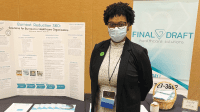
Built to fit

ANA Enterprise News, October 2024

Responding to workplace violence

Answering the call

Creating an organization for future generations
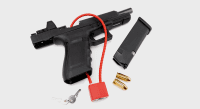
Firearm safety: Nurses’ knowledge and comfort

The Secret Garden: A staff-only wellness and respite space
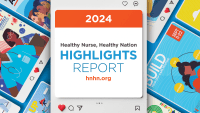
Healthy Nurse, Healthy Nation: 2024 Highlights Report

Nurses build coalitions at the Capitol

Stop fall prevention practices that aren’t working

Self-compassion in practice
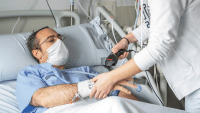
Mitigating patient identification threats

Reflections: My first year as a Magnet® Program Director

Collective wisdom
Miller J. Effective clinical learning for nursing students. American Nurse Journal. 2024;19(4):32-37. doi:10.51256/anj042432 https://www.myamericannurse.com/effective-clinical-learning-for-nursing-students/

IMAGES
VIDEO
COMMENTS
Interactive activities foster critical thinking in nursing students. Case studies, simulations, and creative writing stimulate analysis and imagination. Games, discussions, and group projects enhance problem-solving and communication skills.
Building critical thinking skills is one of the most important outcomes in the clinical setting for nursing students. Collaboration with nursing faculty during the clinical rotation can ease the burden on direct care nurses …
As you read this article, you will learn what critical thinking in nursing is and why it is important. You will also find 18 simple tips to improve critical thinking in nursing and sample scenarios …
If we want the best out of our nurses, we must sharpen their critical thinking skills and make them ready for service. In this short article, we’ve explored a few activities that can help nursing trainees develop critical …
Critical thinking in nursing helps caregivers make decisions that lead to optimal patient care. In school, educators and clinical instructors introduced you to critical-thinking examples in nursing. These educators encouraged using learning …
For nursing students, common strategies used to develop critical thinking skills include: interactive lectures and seminars that describe the concepts, case simulations and concept …